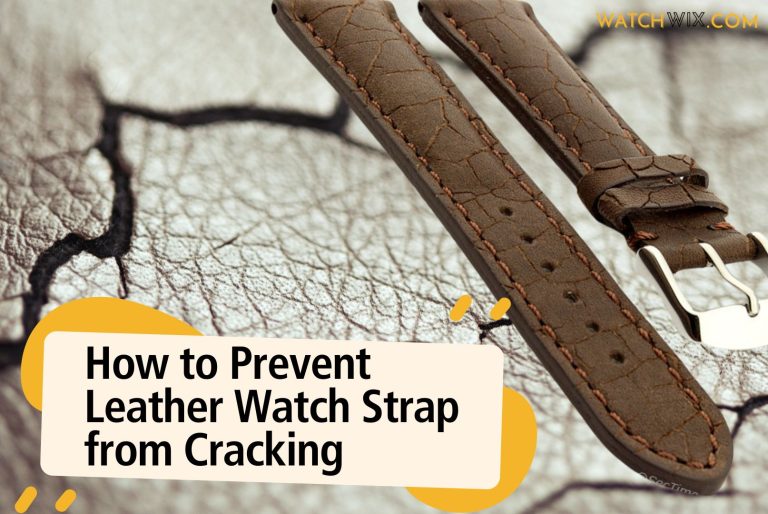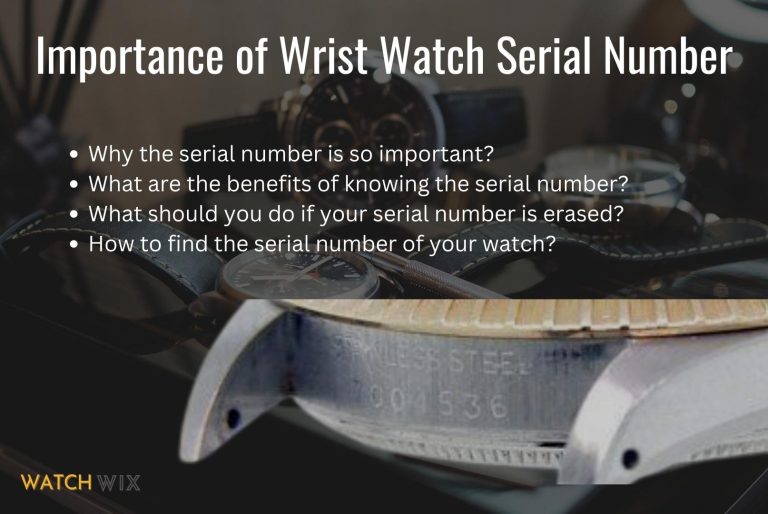How to check if a watch is water-resistant?
Whether you’re an outdoor enthusiast, a sports enthusiast, or simply someone who values the durability of their timepiece, understanding how to verify a watch’s water resistance is essential. From deciphering the difference between water resistance and waterproof to delving into the intricacies of ATM and depth ratings, this guide covers everything you need to know.
We’ll explore how dive watches are designed to withstand extreme aquatic conditions and uncover the meticulous craftsmanship behind water-resistant timepieces.
Topics:
- Steps to check whether watch is water-resistant
- Difference Between Water Resistance and Waterproof
- What is ATM and Depth Guide to Check Water-Resistance Level
- Dive Watches
- How Watches are Made as Water Resistance
- How to Identify whether there is a Water Leak of My Wrist Watch
- What should I do if there is a Water Leak of My Wrist Watch
- Is it possible to Wear Wrist Watch in the Shower
- What is meant by COSC-certified Watches
Steps to check whether watch is water-resistant
There are some steps to follow which you can check if a watch is water-resistant,
Step 01: Consult the Documentation
The first step is to check the watch’s manual or documentation. Most watch manufacturers provide information about the water resistance level of their watches and instructions on how to test it.
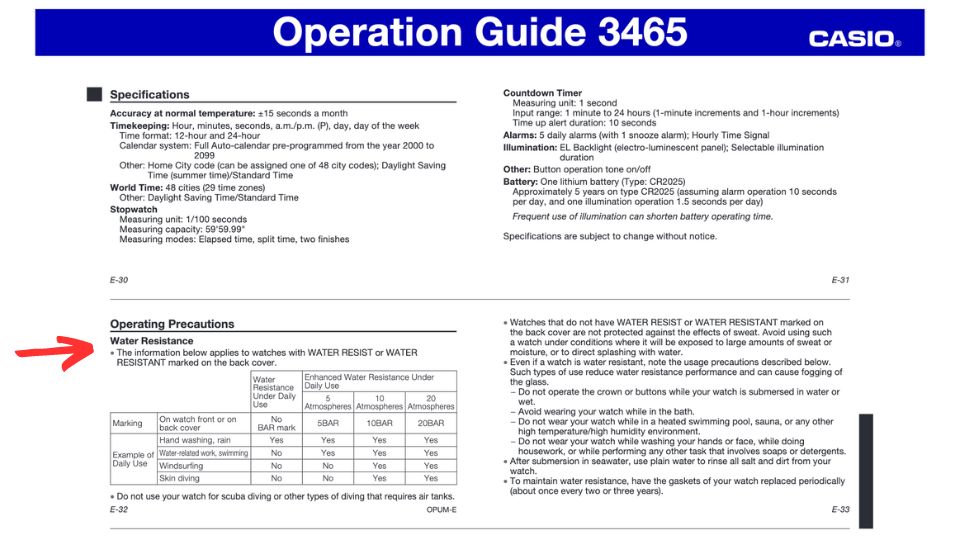
Step 02: Look for Water Resistance Markings
Many watches have water resistance markings on the dial or case back, indicating their level of water resistance. Common markings include “Water Resistant,” “30m,” “50m,” “100m,” “200m,” etc. These indicate the depth to which the watch can safely be submerged.
- 3 ATM = 30 Meters = 98.42 Feet = Usually splash/rain resistant. Ex: Can wear while washing hands
- 5 ATM = 50 Meters = 164.04 Feet = Usually can wear at shower or bath
- 10 ATM = 100 Meters = 328.08 Feet = Usually can were with water activities like recreational surfing, swimming, snorkeling, and sailing.
- 20 ATM = 200 Meters = 656.17 Feet = Usually can wear with professional marine activities, serious surface water sports and skin diving.
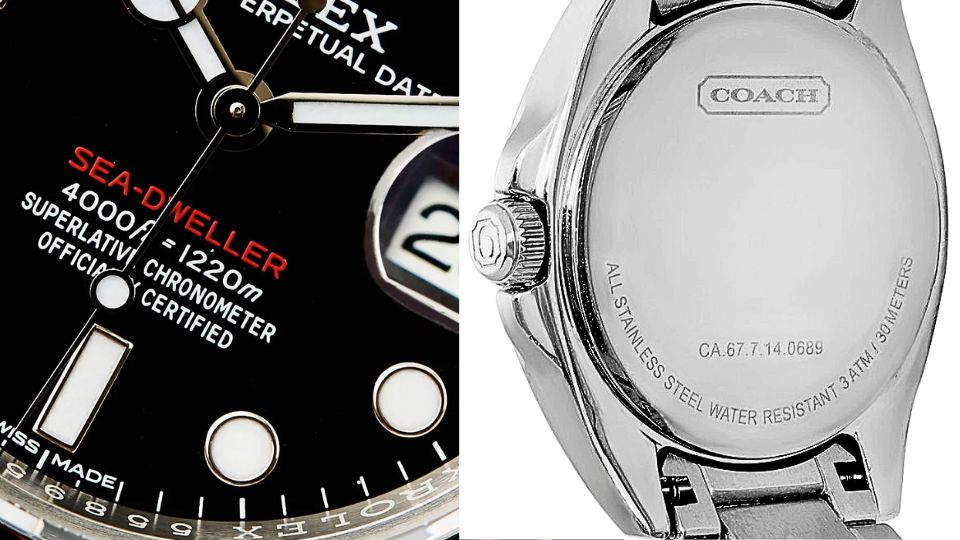
Step 03: Inspect the Case and Crown
Ensure that the watch case and crown (the knob used for setting the time) are properly sealed. If there are any visible gaps or if the crown feels loose when pulled out to set the time, it may not be water-resistant.
Step 04: Perform a Water Test
If you’re still unsure, you can perform a simple water test. This test involves exposing the watch to water to see if it maintains its water resistance. However, be cautious as this method may void the warranty or damage the watch if it’s not water-resistant. You have to do this with bearing the risk by yourself.
Step 05: Drip Test
Gently drip a small amount of water onto the watch. If the water beads up and rolls off the surface without penetrating the watch, it’s likely water-resistant. You have to do this with bearing the risk by yourself.
Step 06: Immersion Test
If the watch is rated for immersion, you can submerge it in water up to its rated depth for a short period (according to the manufacturer’s guidelines). Check for any signs of water intrusion afterward.
Step 07: Regular Maintenance
Even if a watch is water-resistant, it’s essential to have it checked and serviced regularly by a professional watchmaker to ensure its water resistance remains intact. Over time, seals and gaskets can degrade, compromising the watch’s ability to resist water.
Remember, water resistance is not a permanent feature of a watch and can degrade over time due to wear and tear, aging seals, or physical damage. It’s essential to understand the limitations of your watch’s water resistance and take appropriate precautions to avoid exposing it to water beyond its rated depth.
Difference Between Water Resistance and Waterproof
When it comes to wristwatches, the terms “water-resistant” and “waterproof” are often used interchangeably, but technically, there’s a huge difference as mentioned following.
- Water-Resistant
A water-resistant watch is designed to withstand exposure to water to a certain extent, but it’s not completely impervious to water. Water resistance is measured in meters or atmospheres (ATM) and indicates the depth to which the watch can safely be submerged without water entering the case. For example, a watch marked as “30 meters water-resistant” means it can withstand splashes, rain, and hand washing, but it’s not suitable for swimming or diving. - Waterproof
The term “waterproof” is the complete protection from water, but in reality, no watch is entirely waterproof. In the watch industry, the term “waterproof” has largely been phased out in favor of “water-resistant” because no watch can guarantee absolute protection from water under all conditions. Instead, manufacturers use water resistance ratings to indicate the level of protection a watch provides against water ingress.
It’s important for watch wearers to understand the water resistance rating of their timepieces and adhere to the manufacturer’s guidelines regarding water exposure. Over time, seals and gaskets can degrade, reducing a watch’s water resistance, so regular maintenance and proper care are essential to maintain water resistance performance.
What is ATM and Depth Guide to Check Water-Resistance Level
ATM stands for “atmospheres” and is a unit of measurement used to indicate the water resistance of wristwatches. It reflects the pressure a watch can withstand underwater without leaking. If the ATM ATM rating is high, usually the water resistance of the watch becomes great.
Here’s how ATM ratings are commonly interpreted,
- 1 ATM (or 1 Bar) – This is equivalent to a water pressure at a depth of 10 meters (33 feet). Watches with a 1 ATM rating are generally splash-resistant and suitable for everyday use but not designed for swimming or diving.
- 3 ATM – Watches with a 3 ATM rating can withstand water pressure at depths of up to 30 meters (100 feet). They are suitable for activities such as hand washing and light rain but should not be submerged underwater for extended periods.
- 5 ATM – Watches rated at 5 ATM can withstand water pressure at depths of up to 50 meters (165 feet). They are suitable for swimming in shallow water and recreational water activities but not for diving or snorkeling.
- 10 ATM – Watches with a 10 ATM rating are water-resistant up to depths of 100 meters (330 feet). They are suitable for swimming, snorkeling, and water sports but not for deep-sea diving.
- 20 ATM and above – Watches with ratings of 20 ATM or higher are considered suitable for professional diving and can withstand water pressure at greater depths.
Dive Watches
Dive watches are timepieces specifically designed for underwater use, often favored by divers and water sports enthusiasts for their robust construction, water resistance, and special features tailored to diving activities. Here are some key characteristics of dive watches:
- Water Resistance: Dive watches are built to withstand the high pressures encountered underwater. They typically have water resistance ratings ranging from 200 meters (660 feet) to 300 meters (1,000 feet) or more, allowing them to be used for recreational or professional diving.
- Rotating Bezel: A unidirectional rotating bezel is a hallmark feature of dive watches. The bezel is marked with minute increments and can be rotated to track elapsed time underwater, providing a crucial tool for monitoring dive durations and decompression times.
- Luminescent Markers: Dive watches often feature luminescent markers or indices on the dial and hands, ensuring optimal readability in low-light or underwater conditions. High-quality luminescent materials such as Super-LumiNova or tritium gas tubes are commonly used for this purpose.
- Screw-Down Crown: To enhance water resistance, dive watches typically incorporate a screw-down crown mechanism. When not in use, the crown is screwed tightly against the case, creating a watertight seal. This prevents water from entering the watch through the crown stem.
- Helium Escape Valve (HEV): Some professional dive watches are equipped with a helium escape valve, designed to release built-up helium gas that may accumulate inside the watch during saturation diving. The HEV helps prevent damage to the watch crystal by allowing the gas to escape safely during decompression.
- Durability and Robustness: Dive watches are constructed with durable materials such as stainless steel, titanium, or ceramic to withstand the rigors of underwater use and exposure to saltwater environments. They are designed to be shock-resistant and corrosion-resistant for long-term reliability.
- ISO 6425 Certification: Many dive watches undergo testing and certification according to the ISO 6425 standard, which sets specific criteria for water resistance, magnetic resistance, shock resistance, and other performance parameters. ISO-certified dive watches have undergone rigorous testing to ensure their suitability for diving activities.
Popular examples of dive watches are the Rolex Submariner, Omega Seamaster Professional, Seiko Prospex series, and Tudor Pelagos. Whether you’re a professional diver or simply appreciate their rugged design and functionality, dive watches offer a combination of style and utility for enthusiasts of all kinds.
Example of Famous Dive Watches,
- Rolex Deepsea 136668LB ($10,500)
- Omega Seamaster Diver 300M “007 Edition” Master Chronometer ($8,900)
- Blancpain Fifty Fathoms Automatique 42 Rose Gold ($34,300)
- Audemars Piguet Royal Oak Offshore Diver ($30,500)
- Grand Seiko Evolution 9 Spring Drive 5 Day Divers ($11,600)
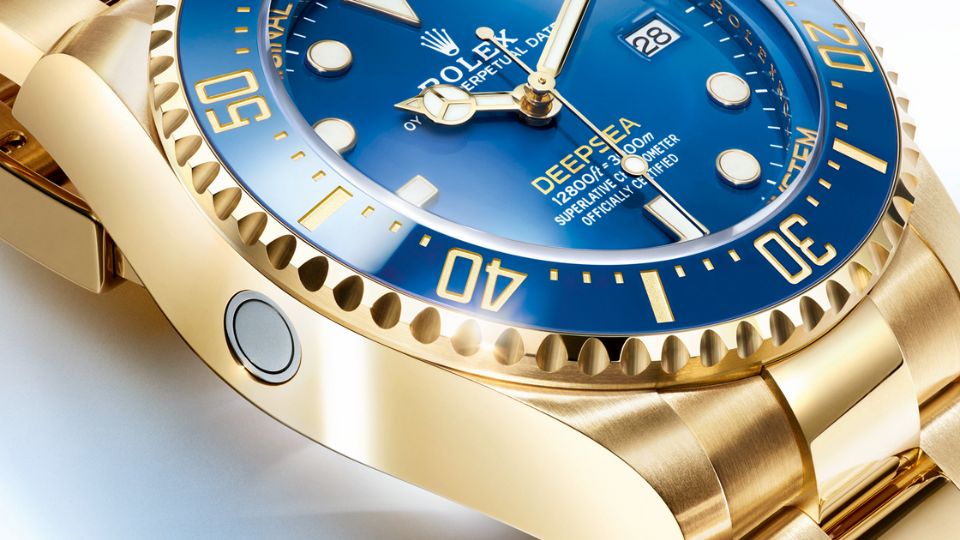
How Watches are Made as Water Resistance
It is better to understand how watches are made as water resistance in order to get a good understanding of how you can use it. Watches are made water-resistant through several design features and manufacturing processes.
- Sealing Gaskets
One of the primary methods used to make watches water-resistant is the incorporation of sealing gaskets made of rubber, silicone, or other synthetic materials. These gaskets are placed at critical points where water could potentially enter the watch, such as the case back, crown, and crystal (glass covering the dial). The gaskets create a tight seal that helps prevent water from penetrating the watch case. - Screw-Down Crown
Many water-resistant watches feature a screw-down crown mechanism. When the crown is pushed in, it forms a tight seal against the case, helping to prevent water from entering through the vulnerable crown area. To adjust the time or date, the wearer must unscrew the crown, set the desired time, and then screw it back in to maintain water resistance. - Case Construction
The construction of the watch case itself plays a crucial role in its water resistance. Water-resistant watches often have cases made of materials like stainless steel, titanium, or ceramic, which are inherently resistant to corrosion and water intrusion. The case design may also feature additional reinforcement and sealing techniques to enhance water resistance. - Crystal Type
The type of crystal used to cover the watch dial can impact its water resistance. Most watches use either mineral glass or sapphire crystal. Sapphire crystal, being extremely hard and scratch-resistant, provides better resistance to water pressure and is less prone to cracking under extreme conditions. - Pressure Testing
Before a watch is deemed water-resistant, it typically undergoes rigorous pressure testing in specialized chambers. During these tests, the watch is subjected to water pressure equivalent to the depth indicated by its water resistance rating. This ensures that the watch can withstand the intended level of water exposure without leaking. - Quality Control
Throughout the manufacturing process, strict quality control measures are implemented to ensure that all components are properly assembled and sealed. Any defects or imperfections that could compromise water resistance are identified and corrected before the watch is released to the market.
Special Note: It’s important to note that while water-resistant watches are designed to withstand certain levels of water exposure, they are not completely impervious to water. Factors such as age, wear and tear, and improper handling can affect a watch’s water resistance over time. Regular maintenance and adherence to manufacturer guidelines for water exposure are essential to preserve the watch’s water resistance performance.
How to Identify whether there is a Water Leak of My Wrist Watch
Identifying whether there is a water leak in your wristwatch requires careful observation and examination. One of the most apparent signs of a water leak is the presence of moisture inside the watch. If you notice condensation or fogging on the inner surface of the crystal, it’s a strong indication that water has penetrated the watch case.
Additionally, if the watch’s movement appears damp or there are droplets of water visible inside the case, it’s a clear sign of water ingress. Another indicator is if the watch stops working or shows irregular behavior after exposure to water, which could suggest internal damage caused by water infiltration. It’s important to address any signs of water leakage promptly to prevent further damage to the watch’s components.
If you suspect a water leak, it’s advisable to have the watch inspected and serviced by a professional watchmaker to identify and rectify the issue before it worsens.
What should I do if there is a Water Leak of My Wrist Watch
If you discover a water leak in your wristwatch, it’s essential to act quickly to minimize potential damage and prevent further complications. Here are the steps you should take:
- Remove the Watch from Water – If the watch is still submerged or exposed to water, remove it immediately to prevent additional water insert.
- Dry the Exterior – Use a soft, absorbent cloth to gently pat dry the exterior of the watch. Avoid using excessive force or rubbing, as this could push water further into the case.
- Open the Caseback – If you’re comfortable doing so and the watch’s design allows for it, carefully open the caseback to assess the extent of the water ingress. Be cautious not to damage any components or seals during this process.
Please do this step only if you are comfortable and have experience in opening the watch case. If you are not comfortable to open the case of the watch, please jump to point (6). - Remove Moisture – If there’s visible moisture inside the case, carefully remove it using a dry, lint-free cloth or a moisture-absorbing substance like silica gel packets. Avoid using heat sources such as hairdryers, as excessive heat can damage delicate watch components.
- Leave the Watch to Dry – Once you’ve removed as much moisture as possible, leave the watch in a dry, well-ventilated area with good air circulation. Allow sufficient time for the watch to dry completely before attempting to use it again.
- Seek Professional Assistance – If you’re unsure about opening the watch or if the water leak appears severe, it’s best to seek assistance from a professional watchmaker. They have the expertise and specialized tools required to assess the damage, repair any internal components, and restore the watch’s water resistance.
- Preventive Maintenance – After addressing the water leak issue, consider having the watch professionally serviced to ensure that all seals and gaskets are intact and functioning correctly. Regular maintenance can help prevent future water leaks and prolong the lifespan of your wristwatch.
Remember that water damage can be detrimental to the delicate internal components of a watch, so it’s crucial to address any water leaks promptly and with care.
Is it possible to Wear Wrist Watch in the Shower
It’s generally not advisable to wear wristwatches in the shower. Most wristwatches are not designed to withstand the prolonged exposure to water, heat, and soap that can occur in a shower. Even watches labeled as “water-resistant” have limits to their water resistance, and hot water and soap can damage the seals and compromise the watch’s integrity.
Additionally, the rapid changes in temperature and pressure experienced during a shower can also affect the watch’s functionality, especially if it’s not designed to handle such conditions.
To prolong the life of your watch and ensure its proper functioning, it’s best to remove it before showering or engaging in activities involving water. If you’re in need of keeping track of time while in the shower, consider getting a waterproof clock designed specifically for that purpose.
What is meant by COSC-certified Watches
COSC stands for Contrôle Officiel Suisse des Chronomètres, which translates to the Official Swiss Chronometer Testing Institute. It is an independent organization in Switzerland responsible for certifying the accuracy and precision of mechanical wristwatches.
A COSC-certified watch has undergone rigorous testing to ensure that it meets specific standards of accuracy and precision. These tests typically involve exposing the watch to various conditions, including different temperatures and positions, over a period of several days. The watch must meet strict criteria for accuracy in order to receive certification.
COSC certification is highly regarded in the watch industry and is often seen as a mark of quality and precision. Many high-end Swiss watch brands submit their watches to COSC for certification to demonstrate the superior craftsmanship and performance of their timepieces.
While COSC-certified watches are known for their accuracy and precision in timekeeping, they may or may not be designed to be water-resistant. Some COSC-certified watches are built with water resistance in mind, but this feature is not a requirement for COSC certification. Conversely, some water-resistant watches may not be COSC-certified if they do not meet the accuracy standards set by COSC.


